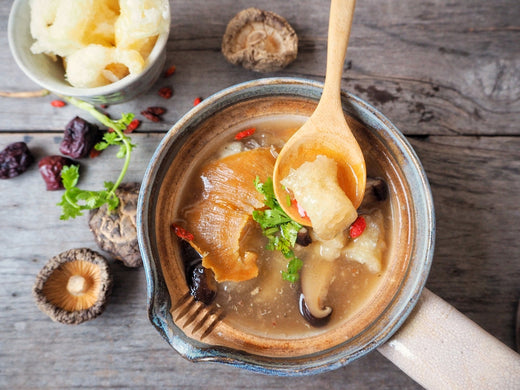Fish maw, a delicacy derived from the swim bladders of larger fish species such as croakers and sturgeons, is renowned for its exorbitant price tag. Surprisingly, despite its status as a coveted culinary treasure, fish maw possesses a mild to almost flavourless taste.
So, what exactly makes fish maw so expensive?
Let's delve into the various factors contributing to its high cost, from its texture and health benefits to the labour-intensive preparation processes.
Texture: The Silent Luxury
One of the primary reasons behind the high cost of fish maw is its unique texture. Unlike many other ingredients, fish maw doesn't rely on flavour to captivate the palate; rather, its appeal lies in its texture. When properly prepared, fish maw has a delicate yet resilient texture, offering a satisfying mouthfeel that elevates any dish it graces. This prized quality makes it an exceptional ingredient in soups, stews, and braised dishes, where it absorbs flavours and imparts a distinctive textural element.
Health Considerations: A Nutritional Powerhouse
Fish maw is not just a culinary delight; it is also celebrated for its numerous health benefits. It is a rich source of collagen, a protein that supports skin elasticity and joint health. Collagen supplements are highly sought after for their beauty-enhancing properties, making fish maw a natural and luxurious alternative. Additionally, fish maw is packed with essential nutrients such as protein, vitamins, and minerals, making it a desirable addition to a balanced diet.
Traditional Prestige: A Symbol of Status
In many Asian cultures, fish maw has deep-rooted historical and cultural significance. It has long been associated with prosperity and prestige and is often served during important celebrations and festive occasions. The symbolic value of fish maw as a status symbol has further driven up its demand and, subsequently, its price.
The Price of Perfection: Labour-Intensive Preparation
Perhaps one of the most significant contributors to the high cost of fish maw is the labour-intensive preparation it undergoes. The meticulous processes involved in turning fish bladders into the coveted delicacy include:
- Careful Cleaning: Fish maw must be meticulously cleaned to remove impurities and any lingering fishy odours, ensuring that the final product is of the highest quality.
- Drying: The cleaned fish maw is subjected to a painstaking drying process, which can involve sun drying or heat drying. This step is crucial for reducing moisture content and preserving the fish maw for long-term storage.
- Sorting: Once dried, fish maw is sorted and graded based on size, shape, and quality. The sorting process requires skilled labour to ensure that only the best pieces make it to market.
- Packing: After sorting, the fish maw is carefully packed to maintain its quality and prevent damage during transportation.
The combination of these labour-intensive processes, the time required, and the skilled labour involved significantly adds to the overall cost of fish maw production.
While fish maw may not boast a robust flavour profile, its mild taste takes a back seat to its luxurious texture, impressive health benefits, and deep-rooted cultural significance. These factors, combined with the labour-intensive preparation processes, contribute to the sky-high price of this culinary treasure. Fish maw remains a symbol of prestige and a testament to the lengths we go to savour the rare and exceptional in the world of gastronomy.
Related Content:
Premium Fish Maw: A Natural Collagen for Healthy Skin and Joints
Exploring the Culinary Delight: Different Types of Fish Maw
Nourishing from Within: Unveiling the Health Benefits of Fish Maw
From Dried to Delicious: A Step-by-Step Guide to Preparing Dried Fish Maw for Cooking
Fish Maw Soup: Traditional Recipe, Tips & Variations
How to Cook Fish Maw: Recipes, Tips & Health Benefits
Fish Maw Benefits: Nutritional Value, Health Benefits & More

